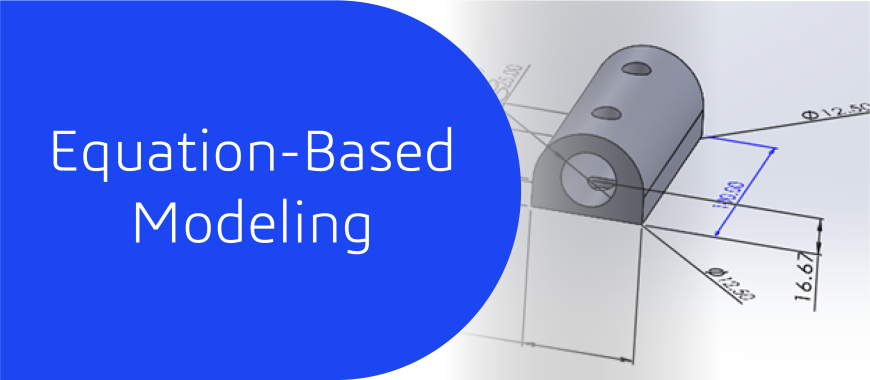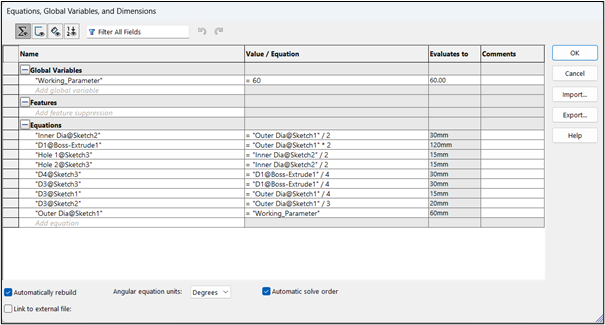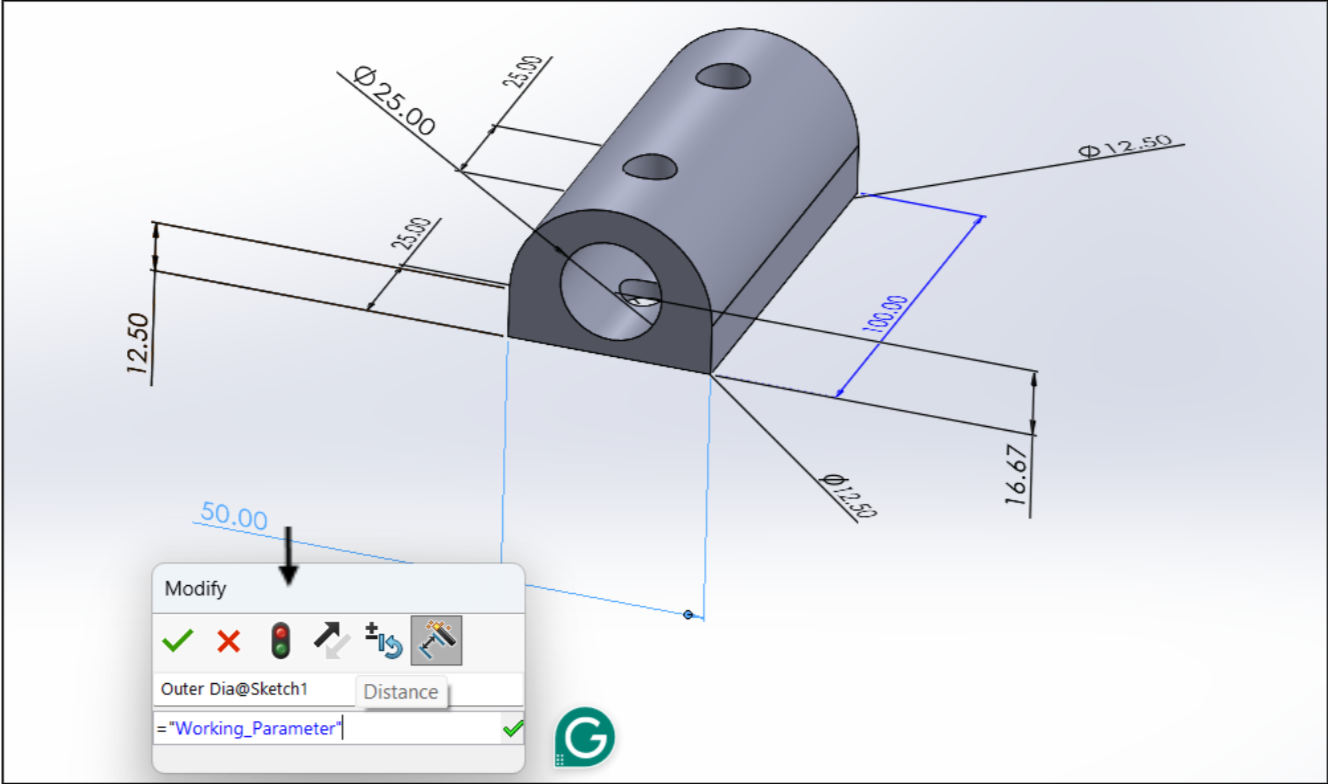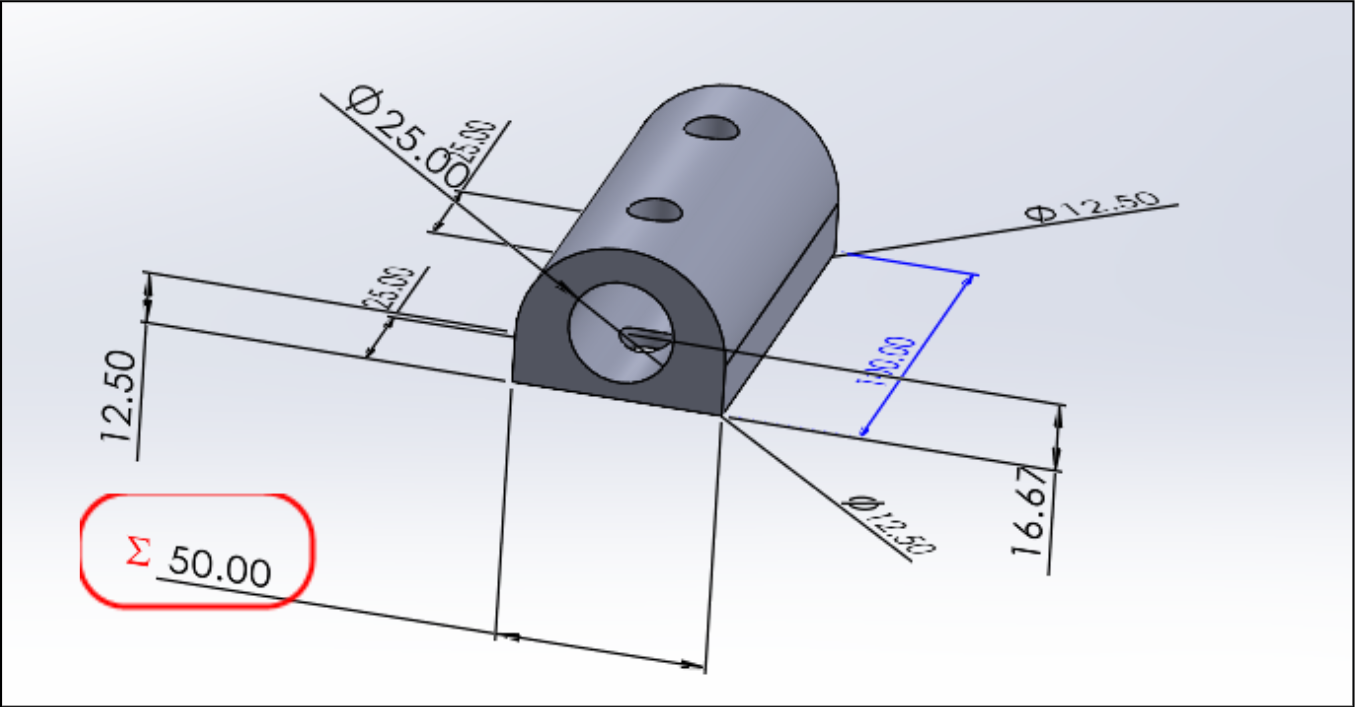
In the fast-paced world of design engineering, efficiency is important. Whether you're designing a simple customized bracket or a complicated multi-body machine, one thing remains constant: rework is the enemy. But how frequently do we find ourselves making the same laborious modifications when requirements change?
What Is Equation-Based Modeling?
Fundamentally, equation-based modeling is the concept of using math and logic rather than hard-coded dimensions to drive your 3D models. You are specifying how it behaves, not just a component.
Imagine telling SOLIDWORKS:
“Make the width always half the length, and adjust the thickness based on the material strength factor.”
Now, when your project specifications change, you only need to adjust one number, and the model will intelligently rearrange itself rather than searching through sketches to adjust a dozen dimensions.
Magic? No. Just math. And a bit of planning.

Global Variables: Your Design’s Control Center
Before you dive into complex equations, there’s one feature that deserves the spotlight: Global Variables.
Think of them as your design’s command center. These are named values—like Panel_Width, MaterialThickness, or Gap_Size—that you define once, and then reuse across multiple sketches, features, or equations.
Why they matter:



The Real Benefits
Here’s where equation-driven modeling shines:
If you’ve ever wished your model would “just know what you meant,” equations are your best friend.
Best Practices: Keep It Smart, Not Sloppy
Equations are powerful, but they can become a tangled web if not managed well. Here are a few golden rules:
The Beauty of Design Intent
Equation-based modeling is more than convenience—it’s about capturing design intent. When you build a model that reflects how the real-world part functions or scales, you’re future proofing your work.
It’s especially powerful in collaborative environments. Another engineer can open your file and instantly understand the logic. No guesswork. No buried sketch dimensions.
Conclusion
In a world where design changes are constant and speed matters, equation-based modeling gives you a real edge. It’s not just a technical trick—it’s a smarter way to think. By embedding logic into your models, you create designs that are flexible, reliable, and easier to manage over time.
Whether you’re building one part or scaling to an entire product line, this approach sets the foundation for consistency and control. Start small, stay organised, and let your models do the heavy lifting.
Engineering Technique is an Authorized Value-added Reseller of SOLIDWORKS Desktop 3D CAD & 3DEXPERIENCE Works Cloud CAD software in Ahmedabad, Vadodara, Surat, and across Gujarat, including Mumbai.
For inquiries, feel free to reach out:
Call: +91 94276 11239
Email: marketing@enggtechnique.com
Thank you for Reading!
Author: Kiran Sonar – Application Engineer
